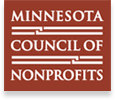
“‘What more can the University do?’ in response to urban problems. [CURA] does this by initiating programs that are ‘pilot, experimental, or short-term’ in order to ‘discard unsuccessful ones’ and ‘help to build successful ones.’” — John Borchert, CURA Director 1968-1978
Over the years CURA has positioned itself as an organization that provides mentorship, seed funding, research aid, and administrative support to a variety of projects and programs addressing urban problems. Many of these have spun off into established nonprofits that are continuously evolving and working to address important issues in the present day. Here we take a closer look at a few CURA-incubated organizations, recognizing what our role was in the early days and how they’ve since evolved.
Government Training Services (GTS)
GTS Educational Events serves government agencies and civic organizations with educational event planning and management to ensure they have the knowledge and skills needed to make positive change for themselves and the communities they serve.
CURA cooperated and assisted in the development of the GTS program by forming a group of local government officials, state legislators, and higher education representatives to encourage and offer mentorship. Established under the state’s Joint-Power’s Act, the program was expected to bring together consumers and providers of local Minnesota government training in order to assess training needs systematically, develop new programs and techniques, and evaluate programs for its member organizations. GTS transitioned into a nonprofit in 2003.
Minnesota Council of Nonprofits (MCN)
The Minnesota Council of Nonprofits (MCN) was founded in 1987 to meet the increasing information needs of nonprofits and to convene nonprofits to address issues facing the sector. It is the largest state association of nonprofits in the U.S. Through MCN, nonprofits join together across interest areas to work on issues of common concern to all.
Originally formed as the “Philanthropy Project” in 1983, a group of community leaders, including CURA’s then Coordinator of Community Development Programs Fred Smith, discussed what the future held for the nonprofit sector and what they could as a collective. Together they designed a new organization, the Minnesota Council of Nonprofits, that would create a more powerful collective voice for nonprofits in order for them to share ideas and collaborate to achieve their missions. CURA provided administration support, grants, and graduate student research in hopes of driving the organization further towards its goals.
Minnesota Housing Partnership (MHP)
Minnesota Housing Partnership (MHP) convenes, guides, and supports a diversity of partners working to improve conditions of home and community. Building on decades of experience, we strengthen development capacity and promote policies that expand opportunity, especially for people at the lowest income levels.
Minnesota Housing Partnership began in 1987 as an informal coalition of community groups and nonprofit developers. The organization assists Minnesota communities to create, improve, and preserve the conditions of home and community through providing loans and grants, tech assistance, organizational capacity-building and public policy initiatives. MHP was incorporated as a member-based nonprofit organization in 1989.
Minnesota Prison Doula Project (MnPDP)
The Minnesota Prison Doula Project (MnPDP) provides pregnancy and parenting support for incarcerated pregnant people and mothers. We provide birth support from trained doulas, as well as group-based and individual education and support. The goal is to nurture healthy relationships and increase parenting confidence and skills. We work with those serving sentences in the Minnesota Correctional Facility - Shakopee (Minnesota’s only women’s state prison) and women held in county correctional facilities throughout Minnesota.
The MnPDP, in partnership with Assistant Professor at the University of Minnesota Medical School Dr. Rebecca Shlafer, is part of an ongoing research and evaluation process of prison-based pregnancy, birth and parenting issues. Starting in 2015 CURA provided an administrative home and physical space for the MnPDP as the organization grew and has just recently launched as its own 501c3. The organization provides birth support from trained doulas, parenting education groups, and one-on-one counseling for incarcerated pregnant people and mothers.
Artspace
Artspace is now a national leader in the field of developing affordable space that meets the needs of artists through the adaptive reuse of historic buildings and new construction.
At the request of Artspace, CURA helped to develop a computer-assisted information management system that registered local artists looking for work spaces and provided an inventory of such available spaces. The system became the basis for securing foundation funding with CURA assisting in the proposal development. CURA was acknowledged for its pivotal significance on the Artspace’s survival, which has established itself as a national model for linking arts development organizations throughout the country and providing affordable space that accommodates the needs of artists.
Minnesota Land Management Information Center
MnGeo transferred from the Department of Administration to MNIT Services on July 1, 2012. The office is directed by Dan Ross, the State's Chief Geospatial Information Officer. The CGIO is accountable to the State’s Chief Information Officer and is actively engaged in the state’s legislatively mandated initiative to consolidate all executive branch IT under the direction of the CIO. Funding for core MnGeo functions is provided through a budgetary appropriation. Funding for project consulting is provided on a cost-recovery basis through contracts with other agencies.
LMIC began as a research and development project at CURA in the late 1960s well before GIS technology was available in the marketplace. At the time, CURA was closely involved with the development and incubation of the technology and worked actively to bring GIS education to state and local governments. LMIC came to be one of the premier GIS centers in the world and conduct numerous environmental projects while serving all levels of the government as well as the private sector. By 1977 the Center was fully developed and moved to the Minnesota state government and in 2009 the Minnesota legislature created the Minnesota Geospatial Information Office (MnGeo) to succeed LMIC.





